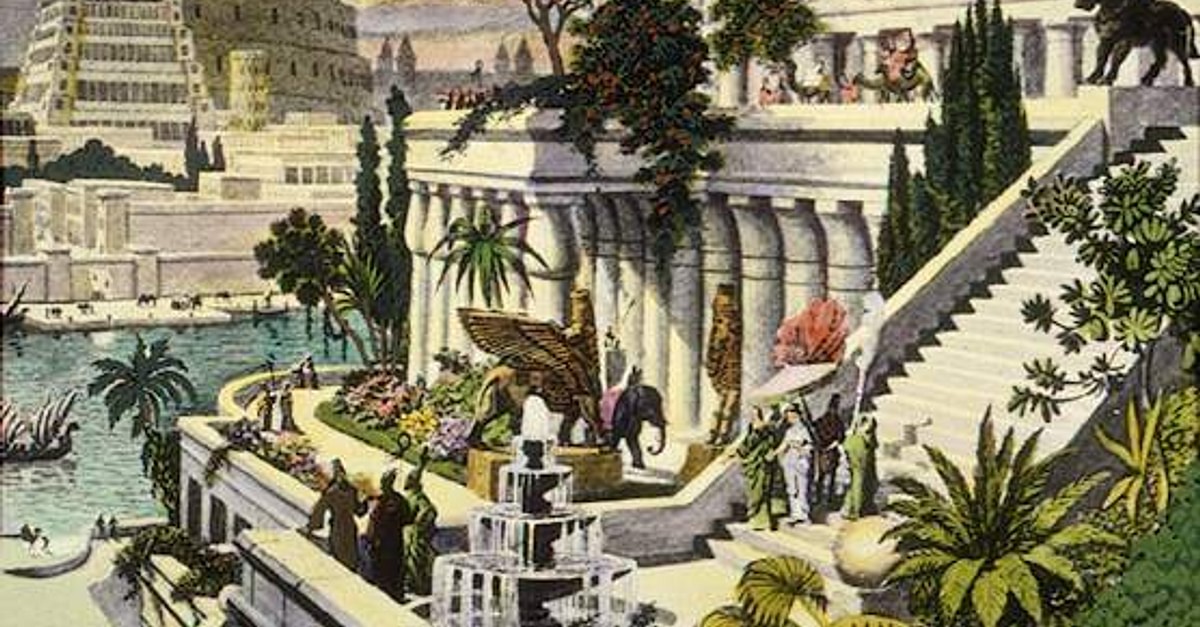Welcome to Facts Vibes! In this article, we delve into the intriguing world of the Hanging Gardens of Babylon. Explore 10 captivating facts about this ancient wonder that will leave you in awe of its architectural marvel and historical significance. Let’s uncover the mysteries of one of the Seven Wonders of the Ancient World.
The Enigmatic Origins of the Hanging Gardens of Babylon
The Enigmatic Origins of the Hanging Gardens of Babylon have long fascinated historians, archaeologists, and enthusiasts alike. These legendary gardens, considered one of the Seven Wonders of the Ancient World, continue to captivate the imagination with their mysterious existence and elusive origins.
The Hanging Gardens are said to have been built by King Nebuchadnezzar II in the ancient city of Babylon, located in present-day Iraq. However, the historical records regarding their creation are scarce, leading to debate and speculation about their true origins. Some scholars even question whether the gardens actually existed, as no physical evidence has been conclusively linked to their existence.
In the context of ancient architecture and engineering, the Hanging Gardens pose a puzzling enigma. Descriptions of the gardens depict lush vegetation, exotic plant life, and an intricate irrigation system that allowed for the gardens to thrive in a region known for its arid climate. The engineering marvels attributed to the construction of the Hanging Gardens defy the technological capabilities of the time, raising further questions about their construction and maintenance.
The enigma of the Hanging Gardens of Babylon continues to inspire quests for answers and truths about their existence. While the legendary nature of the gardens adds to their allure, the historical and archaeological pursuit of understanding their origins remains a tantalizing challenge for modern scholars and researchers.
Most popular facts
The Hanging Gardens of Babylon were one of the Seven Wonders of the Ancient World.
Yes, the Hanging Gardens of Babylon were one of the Seven Wonders of the Ancient World.
It is believed that the gardens were built in the ancient city of Babylon, near present-day Hillah, Babil province, in Iraq.
The gardens were believed to have been built in the ancient city of Babylon, near present-day Hillah, Babil province, in Iraq.
There is debate among historians about whether the gardens actually existed or were a legend.
The debate among historians revolves around whether the gardens actually existed or were a legend.
According to some accounts, the gardens were built by King Nebuchadnezzar II for his wife who missed the mountains and greenery of her homeland.
The gardens were built by King Nebuchadnezzar II for his wife who missed the mountains and greenery of her homeland.
Ancient sources describe the gardens as being an impressive feat of engineering, with plants and trees growing on terraces and irrigation systems to water them.
The ancient sources describe the gardens as being an impressive feat of engineering, with plants and trees growing on terraces and irrigation systems to water them.
The height of the gardens is estimated to have been around 75 feet.
The height of the gardens is estimated to have been around 75 feet.
The Hanging Gardens were likely constructed around 600 BCE.
Yes, the Hanging Gardens were likely constructed around 600 BCE.
Some historical records suggest that the gardens were destroyed by an earthquake in the 2nd century BCE.
The gardens were destroyed by an earthquake in the 2nd century BCE, according to some historical records.
The actual location of the gardens has not been definitively identified by archaeologists.
The actual location of the gardens has not been definitively identified by archaeologists.
It is suggested that the use of hydroponic gardening techniques may have been employed in the construction and maintenance of the gardens.
Hydroponic gardening techniques may have been employed in the construction and maintenance of the gardens.
The gardens were described by ancient writers such as Strabo and Philo of Byzantium.
The gardens were described by ancient writers such as Strabo and Philo of Byzantium.
The inclusion of the Hanging Gardens in the list of Seven Wonders of the Ancient World has contributed to their enduring fame.
The inclusion of the Hanging Gardens in the list of Seven Wonders of the Ancient World has contributed to their enduring fame.
The site of the gardens was inscribed as a UNESCO World Heritage Site in
The site of the gardens was inscribed as a UNESCO World Heritage Site.
Sure, here’s a concise response using to emphasize key parts:
Information and facts encompass data and knowledge that provide insight and understanding about a particular subject or topic.
The Hanging Gardens of Babylon were said to have been an extraordinary sight, attracting visitors from far and wide.
The Hanging Gardens of Babylon were believed to be a remarkable attraction that drew visitors from distant places.
Many artists and architects have been inspired by the legend of the Hanging Gardens, leading to various interpretations in art and literature.
Many artists and architects have been inspired by the legend of the Hanging Gardens, leading to various interpretations in art and literature.
In conclusion, the Hanging Gardens of Babylon continue to fascinate and intrigue us with their mysterious history and architectural wonder. These 10 fascinating facts have shed light on the beauty, engineering marvel, and historical significance of this ancient wonder, leaving us with a deeper appreciation for the ingenuity of ancient civilizations.
